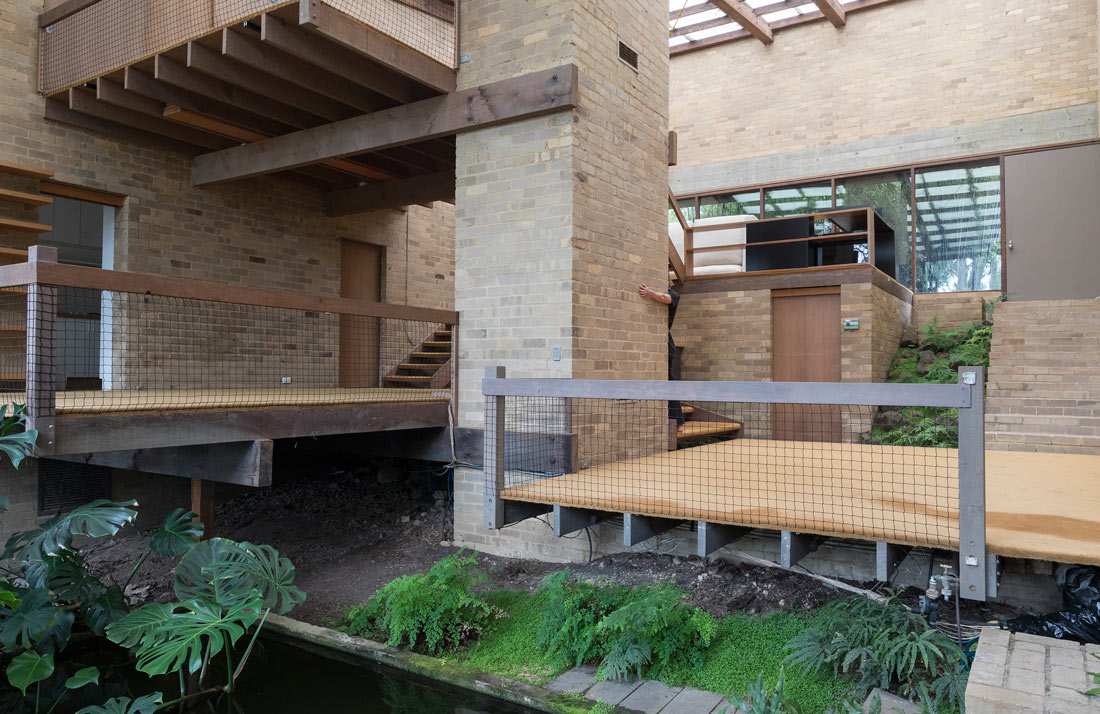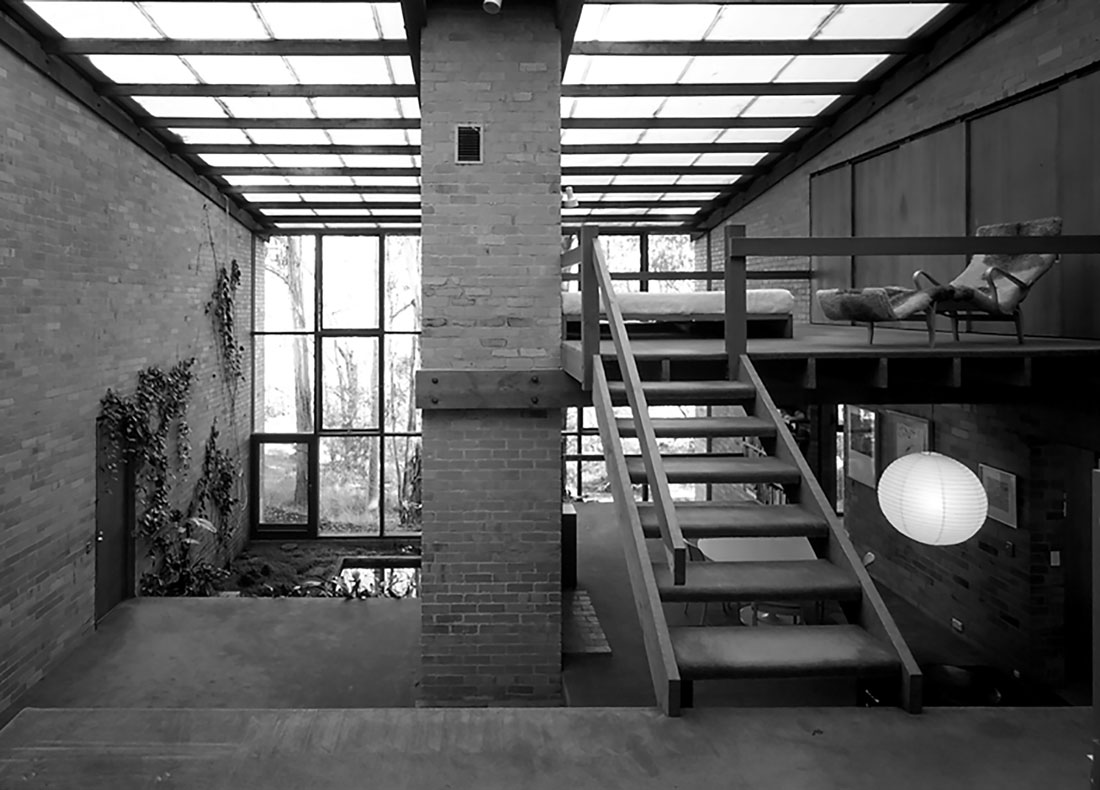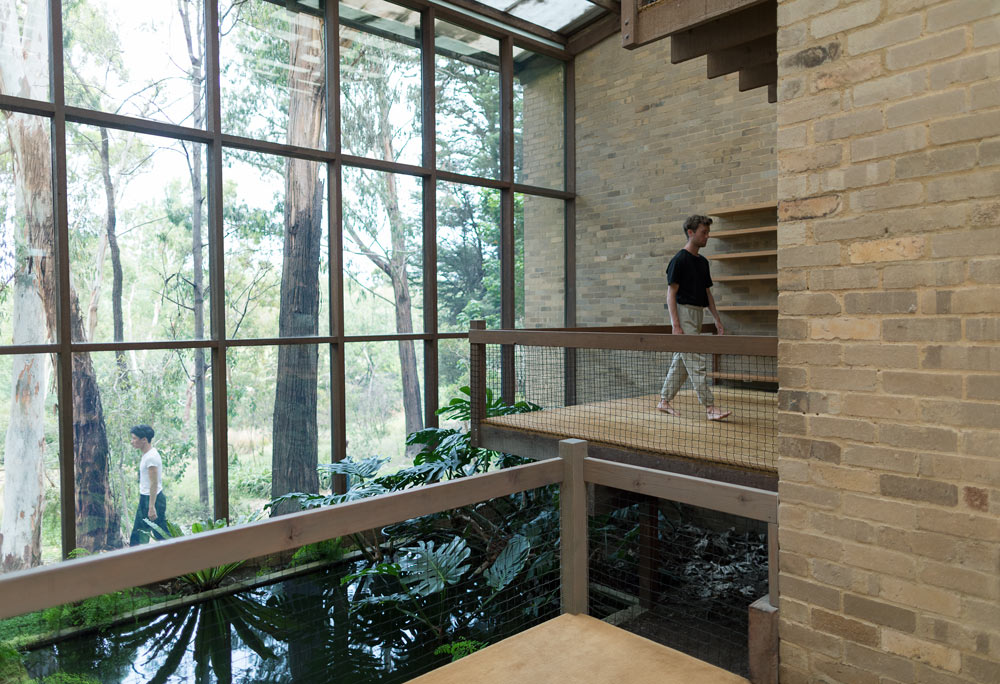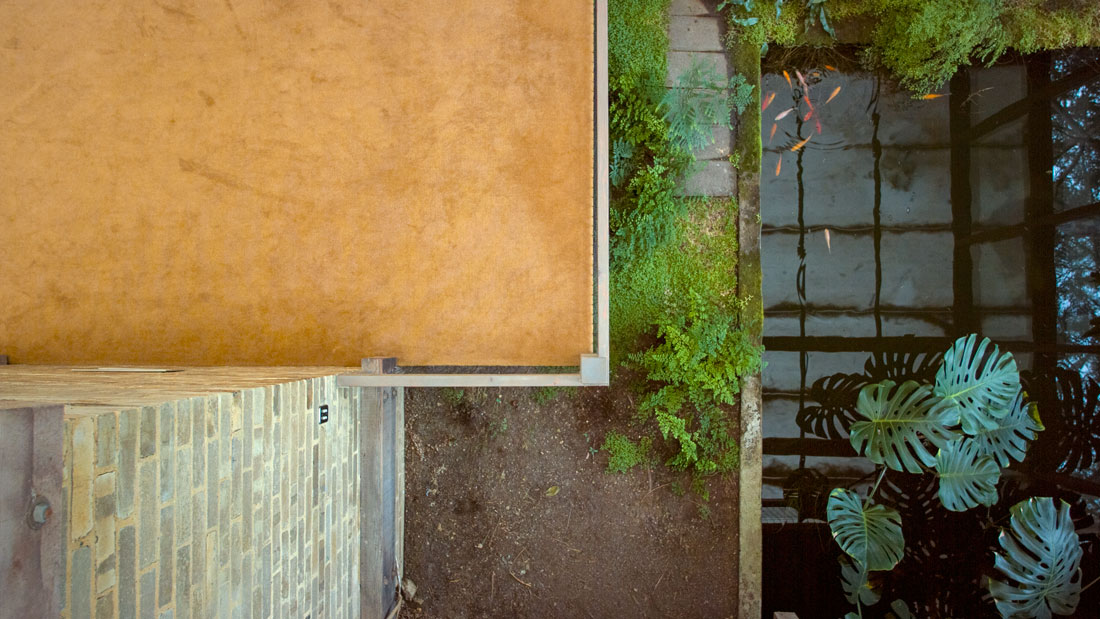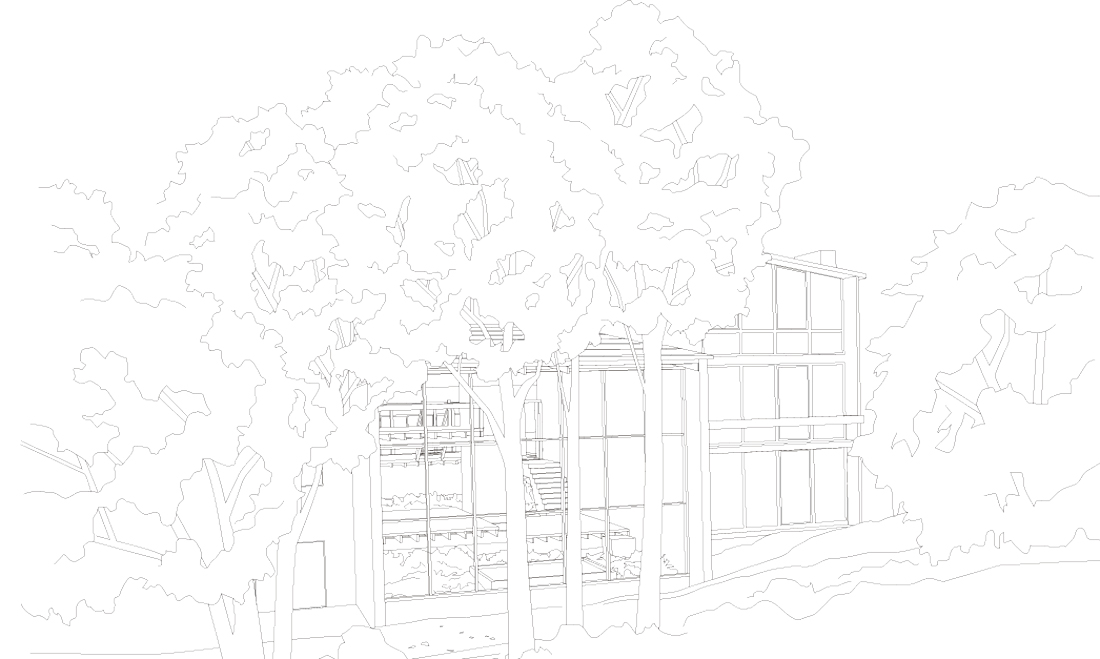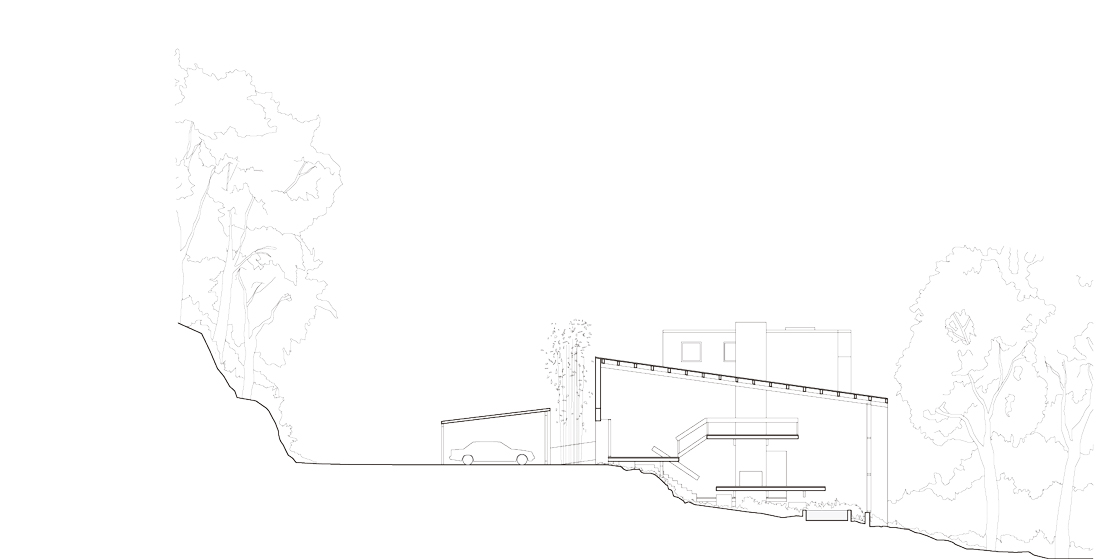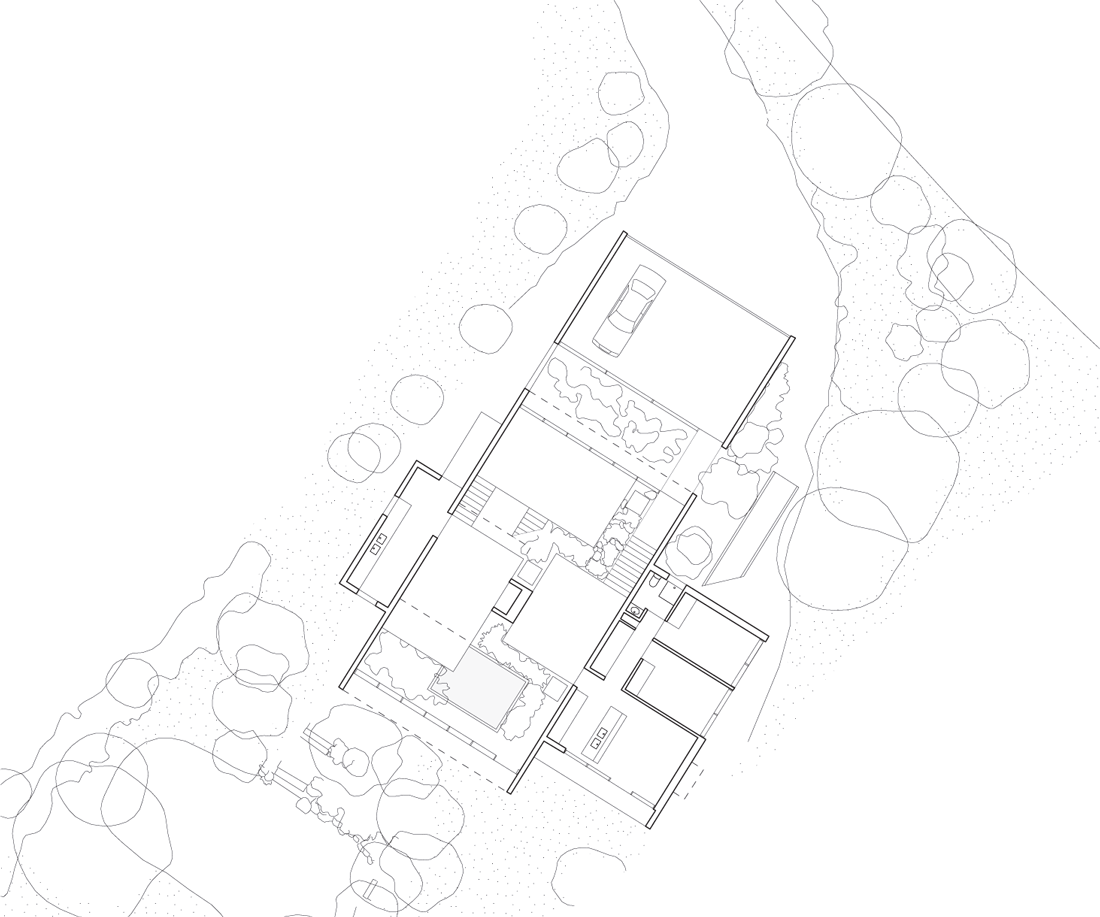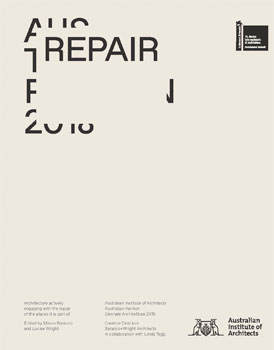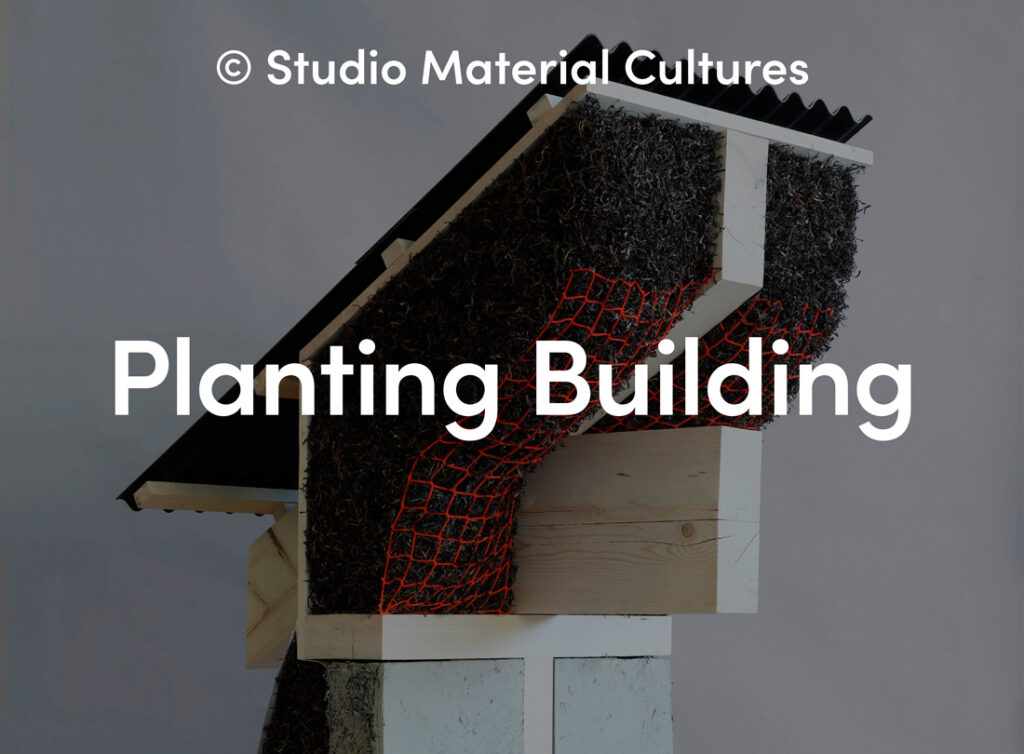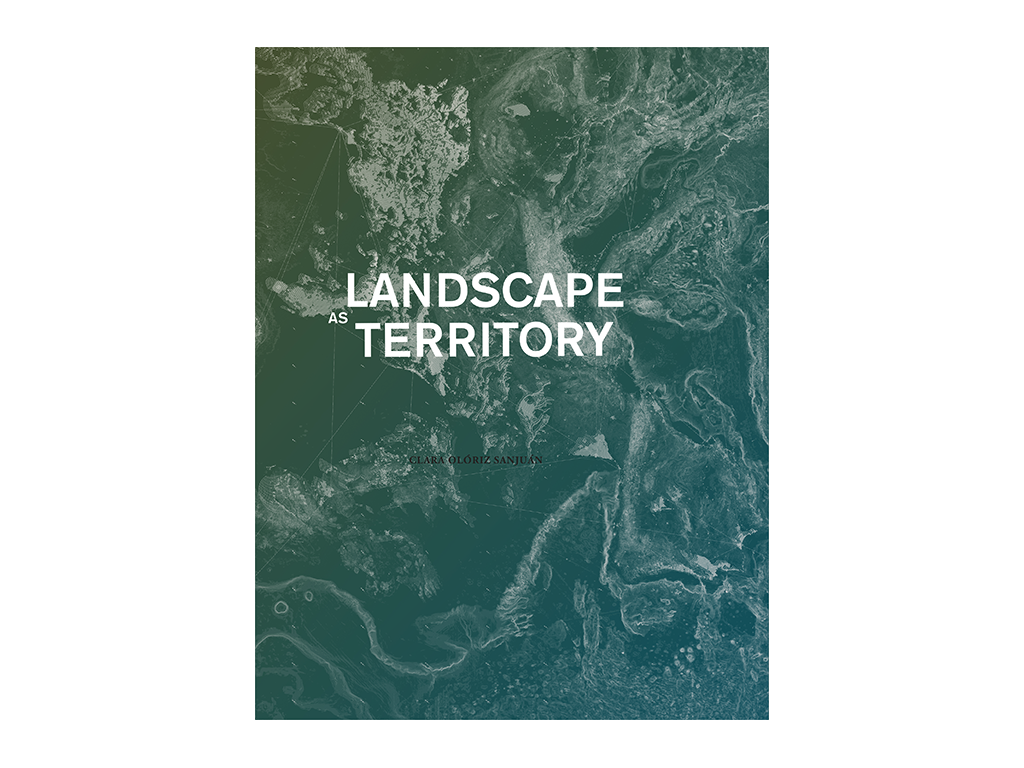Designed in 1967-69 for Mary and Grant Featherston, two industrial designers, in an inner suburb north-east of Melbourne, this house is located on the threshold between the built suburban fabric and an open area of a park reserve, a creek and the green fields of a school.
This project has been included as an historical project that nonetheless is strongly contemporary in character and approach. Boyd’s legacy continues in the work of contemporary Australian architects and also prompts a way forward for architecture, particularly in relationship to the landscapes they inhabit through a quality of continuous space found in his work where the buildings are spatially reliant and sympathetic to the places they occupy.[1]
Ground. Video still © Linda Tegg
The response to Mary and Grant’s dream to live in ‘the open’ was to design a house with no individual and separate rooms. Provided, instead, with areas of inhabitation of spatial continuity, the openness of this house carries at once the character of two different conditions – that of the big industrial shed and that of the covered outdoor space. Potentially interchangeable programs are located through platforms for the studio, dining, living and bedroom areas underneath a translucent roof (originally fibreglass, now polycarbonate).
Circa 2005 © Aaron Pocock
Ground. Video still © Linda Tegg
The sense of openness of covered outdoor areas, is here visibly reflected in the retention of the sloping and exposed ground plane that carries through the building. The retaining of the ground plane – both its slope and the actual soil itself – inside the house is a radical shift in how a building is conceived as part of its site. This work confidently demonstrates an approach and relationship to a site that includes it as part of the response, removing another layer of separation and moving towards a building conceived as part of a continuum rather than a discrete object.
Ground. Video still © Linda Tegg
The exposed ground inside the house connects spatially to the exterior, through the large glazed south facade, which is not a frame for ‘possessing’ the view, but rather a medium through which indoor and outdoor landscapes join. Platforms float above and in between the internal garden, contributing to create an unseparated space which erases any hierarchy between architectural components; ground, mezzanine, upper floors, but also architectural and landscape presences and all facades on the perimeter, including the translucent roof, coexist as interrelated parts and yet in a continuum.
View from south
The shift towards a more integrated built and open vegetated space, as well as more careful approach to siting buildings in the Australian landscape (which consists of many very diverse conditions) could be also discussed in the work of the Griffins among others and later, around the same time as the Featherston house, through the moment/generation of architects that was particularly enlightened in the seventies. This latter group were motivated by ethical and environmental considerations of the time and made careful buildings that responded to their contexts: Merchant Builders, Glenn Murcutt, Gabriel Poole, Troppo Architects and others. Internationally this trajectory was being pursued by the Smithsons, De Carlo and arguably, in their own way, through the utopian provocations of Superstudio, Archigram, Buckminster Fuller and Cedric Price among others.
Alison and Peter Smithson, empathetic references to Boyd who reviewed some of their work, suggest qualities for buildings of the ‘Conglomerate Order’ – qualities that not surprisingly can precisely describe this house:
“A building of the Conglomerate Order…has a capacity to absorb spontaneous additions, subtractions, technical modifications without disturbing its sense of order, indeed such changes enhance it;…has faces which are all equally considered…no back, no front, all faces are equally engaged with what lies before them; the roof is ‘another face’; is an inextricable part of a larger fabric; is dominated by one material, the conglomerate’s matrix;…is lumpish and has weight.”[2]
